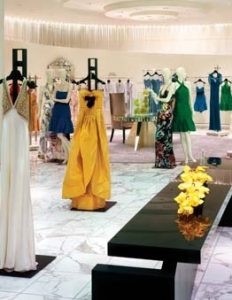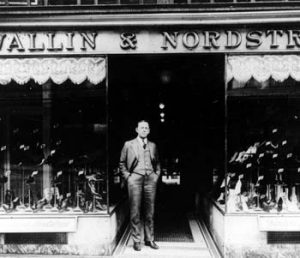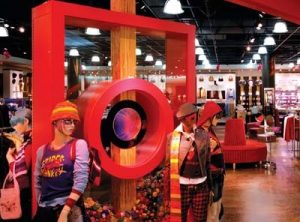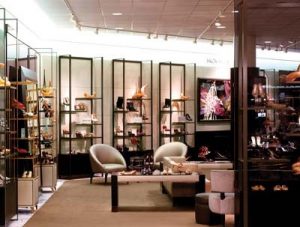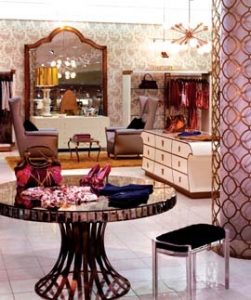To say that Nordstrom is just that retailerwith the great shoe department – or the one with the extraordinary customer service – is to overlook much about the century-old fashion specialty store. This is a company so true to itself, its self-styled description has become part of the American lexicon: The Nordstrom Way.
Yes, it was founded as a shoe store, in 1901 by John W. Nordstrom and Carl Wallin. But in 105 years of great growth (what was Wallin & Nordstrom is now a nearly $8 billion retail organization with more than 150 stores), the company has stayed true to its founding philosophy: offer the customer the best possible service, selection, quality and value.
Nordstrom's ability to do that in the face of ever-changing market needs and growing competition has earned it the 2006 VM+SD/Peter Glen Retailer of the Year Award, which will be handed out at VM+SD's International Retail Design Conference this month in San Francisco.
When other retailers compromised store ambience for more product on the sales floor, Nordstrom remained committed to wide, unobstructed aisleways. While others have closed the doors on in-house restaurants and cafés, Nordstrom continues to emphasize these amenities to its customers. And while some have sacrificed visual merchandising and staff size to tightening budgets, Nordstrom still views both as opportunities to be a better retailer.
Why?
“Our customers have consistently told us they appreciate these elements,” says Dave Lindsey, Nordstrom's vp, store planning and architecture. “By maintaining what others have taken away, we've tried to make ourselves more unique and special and we think our customers appreciate that.”
Advertisement
This simple-sounding formula has spelled success for the Seattle-based company. In 2005, Nordstrom experienced the fourth consecutive year of same-store sales gains, reporting a 6 percent increase, while total sales rose 8.3 percent. For the first quarter of 2006, it reported a preliminary sales increase of 8 percent while same-store sales rose 5.4 percent.
But to define Nordstrom's success only by its sales figures is to miss the bigger picture of the Nordstrom way.
The Nordstrom Experience
By the 1960s, Nordstrom had grown into the largest independent shoe chain in the nation, and the Nordstrom family began looking for expansion opportunities. (Wallin had sold his interest in the company in 1929 to John's sons.) In 1963, the company acquired Best Apparel, a Seattle-based clothing store, and in 1965 opened a Best Apparel location next to its shoe store in Seattle's Northgate Mall.
In 1966, it expanded again, purchasing the Portland, Ore., fashion retailer, Nicholas Ungar, and a new name, Nordstrom Best, was introduced. By 1973, when the company formally changed its name to Nordstrom Inc., it was recognized as the West Coast's largest-volume fashion specialty store, with sales of more than $100 million.
Upon that foundation, Nordstrom has continued to expand its presence throughout the U.S., with 156 stores in 27 states, including 99 full-line stores, 49 Nordstrom Racks (its off-price retail division), five Façonnable boutiques, one freestanding shoe store and two clearance stores.
Advertisement
At the helm today is president Blake Nordstrom, a fourth-generation family member. But it wasn't always family-run. During a period of strong growth in the mid 1990s, the fourth generation of Nordstroms – brothers and cousins Bill, Blake, Dan, Erik, Jim and Pete Nordstrom – took over the business and put two “outsiders” in control: John Whitacre was named ceo and long-time Nordstrom employee Marty Wikstrom was named president of the full-line group.
By 2000, sales were turning down, traditional Nordstrom shoppers were feeling abandoned by an aggressive, colorful “Re-Invent” campaign, analysts and investors were balking, rumors circulated that the company was for sale. The company reversed plans for a major new-store expansion program.
In September 2000, Whitacre and Wikstrom left the company, replaced by Blake Nordstrom as president. Pete Nordstrom took over as president of the full-line stores. Their father, Bruce Nordstrom, who had been retired for five years, was coaxed back to work as chairman.
It's difficult to ignore the coincidence. Within a year, sales and profits were solid, and quarterly results have been steadily upward ever since.
Throughout this century of evolution, Nordstrom established a standard of store design and customer service that came to define “the Nordstrom experience.”
“It's everything from walking into a comfortable space, being greeted by our salespeople, having pride in serving the customer and, in the end, having that customer leave happy,” says Lindsey. “If our salespeople welcome the customer into their departments as if she is entering their living room, we've done our job.”
Advertisement
To that end, Nordstrom has always given its salespeople a considerable amount of empowerment to do whatever it takes to make the customer happy. The result is legendary service that has become the standard many other retailers have tried to imitate. “Our idea is to make it special, unique, exciting and so good that the customer wants to come back and do it again,” says Lindsey.
So over the years, stories have surfaced of staff members going beyond the ordinary to handle a customer's request and of loyal customers planning vacations to coincide with Nordstrom's three annual sales.
But it isn't just service. Nordstrom couples its commitment to customer service with a store environment designed to convey “a sense of timelessness.”
“We want people to walk in and recognize our store as a Nordstrom store,” says Lindsey.
At a time when retailers are fighting it out to grab shoppers' attention, how does Nordstrom achieve this?
“It's a series of elements that make the shopping experience not only convenient but also comfortable,” Lindsey explains.
That includes seating at the entryway and at elevator spaces, escalators located in the middle of the stores, widely dispersed restrooms, mother's rooms, in-house cash machines and, in some stores, that familiar live piano music.
Such store ambience helps make Nordstrom a destination. But the retailer recognizes that's only half of the puzzle.
“There's a whole different makeup of the marketplace now,” says Lindsey. “Discount and fashion specialty stores sometimes have the same product.”
Nordstrom is responding by improving its merchandise offering at a variety of price points, especially in women's apparel. The same formula has worked for years in the shoe department, where the available range of sizes includes men's 5-20 and women's 4-14.
The fashion specialty retailer has also begun increasing its designer offering, giving these lines more presence inside the store environment. Last year, the company partnered with Jeffrey Kalinsky, the founder of the successful two-store Jeffrey luxury chain (in New York and Atlanta). Kalinsky became Nordstrom's director of designer merchandising, working alongside the corporate merchandise managers.
“Our customers are saying how much they want that and support it,” says Lindsey. “So, as always, we're following our customers.”
The 'Oh Wow' Factor
The increased fashion component will be accompanied by what Lindsey calls “romancing the product.”
“It's not just letting something hang on a rack, it's about putting together fashion beyond where the customer might be originally thinking, showing her the possibilities,” he says. “Once you get the customer excited, you've created the experience for her and she'll want to come back.”
What helps get them excited? Visual merchandising. Lindsey says shoppers today are interested in mixing designer brands with more moderate price points and visual displays help customers learn how to put such outfits together. Also, display tables and large, comfortable fitting rooms enable sales staff and customers to work together on finding that perfect outfit. The result is an engaging shopping experience that further defines the Nordstrom way.
As it looks into the future, Nordstrom says it will continue to focus on creating a seamless shopping experience through its many touchpoints, including in-store, online and by phone. An aggressive expansion plan includes 15 new full-line stores by 2010. Nordstrom also continues to search for a suitable location for its first store in Manhattan. (The most recent discussion had it possibly considering the old Lord & Taylor flagship site on Fifth Avenue.) The company has also committed 30 percent of its capital spending budget toward remodeling existing stores, all in an effort to stay fresh and relevant to today's consumers.
“Everything we do tries to create that 'oh wow' factor,” says Lindsey. “That's our strategy on every table and in every department throughout the store. It's about making something pop out that would be unexpected.”
Nordstrom will receive the Retailer of the Year award at VM+SD's International Retail Design Conference, September 6-8 at The Fairmont Hotel in San Francisco. Dave Lindsey will share the Nordstrom story and the retailer's plans for the future during a presentation on Thursday, September 7. For more information, visit www.irdconline.com.
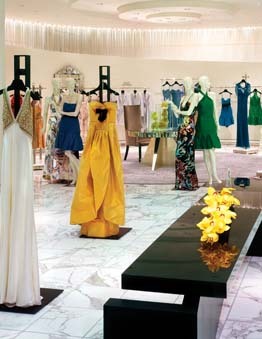

 Photo Gallery6 days ago
Photo Gallery6 days ago
 Headlines2 weeks ago
Headlines2 weeks ago
 Headlines6 days ago
Headlines6 days ago
 Headlines1 week ago
Headlines1 week ago
 Headlines2 weeks ago
Headlines2 weeks ago
 Headlines7 days ago
Headlines7 days ago
 Designer Dozen2 weeks ago
Designer Dozen2 weeks ago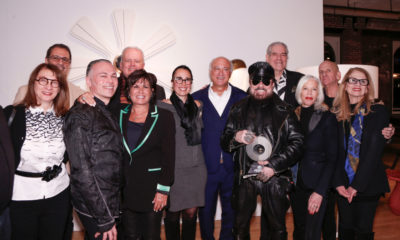
 Special Reports2 weeks ago
Special Reports2 weeks ago
